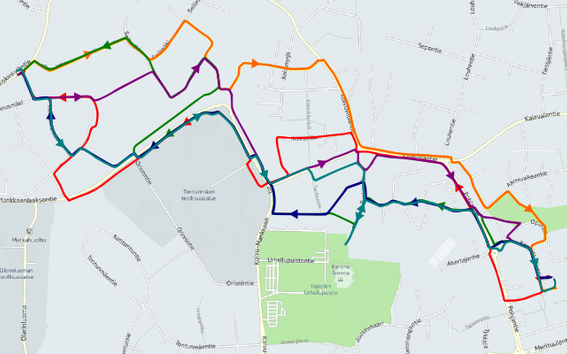Navigation using music leaves the user's hands free

The study conducted by Aalto University and Nokia Technologies investigated two different guidance types: route guidance and beacon guidance.
With route guidance, the user is guided along a route with the help of spatial audio, in this case music heard from the route in front of the user. With beacon guidance, the music is instead heard straight from the destination and the user finds his or her own route towards the destination. The user's preference between route guidance and beacon guidance seems to depend more strongly on the environment than on the guidance method itself.
– Beacon navigation works well in familiar environments and in cities where the user can make a turn at every intersection. In suburban areas, beacon navigation may not work that well, since the user may not know the distance to the next possible turn, Aalto University researcher Robert Albrecht says.
The majority of the participants in the user studies were happy with the investigated music navigation method and would like to use it in the future. Everyone reached their destination, although a few participants found it slightly difficult to hear the direction of the music.
– During route guidance the direction of an upcoming turn must be presented earlier to cyclists than to pedestrians because of the higher speeds. One participant cycled so fast that the audio guidance didn't keep up with him. Some participants also felt that they would have needed updates about their progress during the navigation, Albrecht comments on the challenges of the study.
Acoustically transparent headphones
The participants in the user studies were equipped with acoustically transparent headphones. With the help of these, they could clearly hear both the music and sounds from the surroundings.
– Safety was also one of the aspects we investigated. Most participants thought that it was relatively easy to take the traffic and the environment into account while navigating with the help of music. They felt safe during the tests, Albrecht says.
In the study the direction where the music was heard from was modified using HRTFs (head-related transfer functions). These functions add a sense of direction to a sound presented with headphones, as the functions include subtle hints of the direction, such as level and time differences between the ears.
– It is important to know the compass direction of the head, that is to say, in what position the head is, so that the direction of the spatial sound is stable even if the head moves. In this study this was done with the help of a special head orientation tracker that the cyclists had attached to the helmets and the pedestrians to the headphones, Albrecht states.
This work by researcher Robert Albrecht and professor Tapio Lokki from the Aalto University Department of Computer Science, together with Riitta Väänänen from Nokia Technologies, is the continuation of a previous navigation study by Nokia, in which the direction of the sound of a walking horse was used as the navigation cue.
– The sound of the walking horse was chosen because it does not belong to a typical urban environment. Thus it can easily be distinguished from the surrounding acoustic environment. The user study participants said that it was easy to follow the sound of the horse in the background, while at the same time paying attention to the traffic or chatting with others. It is important that users can select the audio used for the navigation according to their mood, the situation and the environment, Väänänen underlines.
– Using sound for navigation leaves the user's hands and eyes free for other tasks. Spatial audio is a particularly intuitive method to guide people in different directions. These research results will hopefully contribute to the development of future navigation applications, Albrecht adds.
The reported study is the first to use exact presentation of the direction of music - earlier studies have simply adjusted the balance of the music between the two ears to guide users.
Link to the research paper: http://link.springer.com/article/10.1007/s00779-016-0906-z
More information:
Robert Albrecht
Tel. +358 40 514 8757
[email protected]
Tapio Lokki
Tel. +358 40 578 2486
[email protected]
Read more news

Get to know us: Associate Professor Maria Sammalkorpi
Sammalkorpi received her doctorate from Helsinki University of Technology 2004. After her defence, she has worked as a researcher at the Universities of Princeton, Yale and Aalto.
Aalto computer scientists in ICML 2024
Computer scientists in ICML 2024
In low-hierarchy organisations, even key policy issues are discussed in Slack
In a recent study, Aalto University alumn Lauri Pietinalho, a visiting scholar at New York University's Stern School of Business, and Frank Martela, an assistant professor at Aalto University, investigated how low-hierarchy organisations deal with shared policies in confrontational situations and how authority functions within them.